Mon métier de graphiste illustrateur freelance
Il est souvent source de confusion pour de nombreux clients et étudiants. Il est important de clarifier les différences entre un graphiste, un illustrateur et un directeur artistique, tout en soulignant leur complémentarité. Il est tout à fait possible qu’un graphiste soit également un illustrateur, un webdesigner, un animateur, et bien d’autres choses encore.
En ce qui me concerne, je possède une formation en graphisme et en direction artistique. J’ai choisi de me spécialiser dans l’illustration, car le dessin est bien plus qu’un simple métier pour moi, c’est une véritable passion. Cette double compétence me permet d’avoir une vision globale et de comprendre rapidement les besoins des clients.
Le métier de graphiste illustrateur freelance consiste à créer des designs graphiques et des illustrations pour divers clients tels que des entreprises, des magazines, des livres, des sites web et des applications. Les tâches peuvent inclure la conception de logos, de brochures, d’annonces publicitaires, d’illustrations pour livres pour enfants, de storyboards et de designs pour les médias sociaux tels que Facebook, Instagram, TikTok et LinkedIn. Les graphistes illustrateurs freelances travaillent généralement de manière indépendante, que ce soit à distance ou dans leur propre studio. Ils doivent posséder de solides compétences en dessin, en conception graphique et en utilisation des logiciels de conception graphique.
Qu’est-ce qu’un illustrateur ?
Un illustrateur freelance est un artiste visuel qui crée des images pour enrichir et compléter le contenu textuel. Il utilise une variété de techniques et de médiums, tels que le dessin, la peinture, l’infographie et la conception numérique, pour donner vie à des concepts, des idées ou des récits.
Rôles et responsabilités
Les illustrateurs travaillent dans une variété de domaines, notamment l’édition, la publicité, le marketing, les médias numériques, les jeux vidéo et bien d’autres. Ils peuvent être responsables de créer des illustrations pour des livres, des magazines, des affiches, des sites Web, des jeux vidéo et bien plus encore.
Compétences et qualifications
Pour devenir un illustrateur accompli, il est important de maîtriser les compétences techniques liées à la création d’images, telles que le dessin, la peinture et la composition. Il est également important de développer une compréhension approfondie du contexte et du public pour lequel les illustrations sont destinées.
Illustrateur / illustratrice :
Il existe différentes spécialisations lorsque l’on est dessinateur / illustrateur :
– L’illustrateur jeunesse travaille principalement pour la presse et l’édition et crée des histoires et des illustrations destinées aux enfants.
– L’illustrateur publicitaire réalise des affiches et des visuels utilisés dans des campagnes publicitaires, y compris des spots télévisés.
– L’illustrateur de communication crée des illustrations à des fins informatives. Dans mon expérience, cela comprend souvent la création de saynètes, de mascottes, etc., pour faciliter la lecture de certains documents et les rendre plus attrayants, ludiques et compréhensibles.
– L’illustrateur 3D réalise des illustrations en trois dimensions, telles que des mascottes 3D, des paysages ou des emballages.
– L’illustrateur de bande dessinée se spécialise dans la création de bandes dessinées.
– Le roughman réalise des croquis et des esquisses pour les storyboards, les affiches, etc.
Chaque illustrateur possède ses propres compétences. Certains sont capables de réaliser tous les types de travaux mentionnés précédemment, tandis que d’autres se spécialisent dans un domaine particulier. La diversité des compétences et des spécialisations contribue à la richesse et à la complémentarité de ce métier passionnant de graphiste illustrateur.
Graphiste :
Le métier de graphiste freelance est très polyvalent et englobe un large éventail de compétences. Il se situe souvent à la frontière d’autres métiers de la communication visuelle tels que la direction artistique et l’illustration. Par exemple, on peut parler d’un graphiste illustrateur, qui est capable de combiner création graphique et illustration.
En tant que graphiste, il est essentiel de pouvoir créer une identité visuelle pour une entreprise, comprenant des éléments tels qu’un logo, une charte graphique, une en-tête de page, etc. Le graphiste peut également travailler sur la mise en page d’un magazine, d’une affiche, d’un flyer, ce qu’on appelle communément une maquette. Il est primordial que le graphiste puisse fournir un fichier prêt à être imprimé, respectant les standards de l’industrie.
Infographiste :
Le métier d’infographiste est petit à petit remplacé par le métier de graphiste car son travail consiste a créer de la mise en page de chiffres, pourcentages, camemberts… ainsi que la création de pictogrammes. L’infographie pour but de rendre les chiffres extrêmement lisible et compréhensible.
Webdesigner :
Aujourd’hui nous pouvons aussi parler d’UX designer (user experience) et UI designer (user interface). Pour faire simple il y a un travail d’interface / d’ergonomie du site et un travail également expérience utilisateur à savoir le comportement adopté face à un site web, l’émotion du site… Le webdesigner travaille en général avec un codeur pour que le site web soit fonctionnel. Le travail du codeur est de rendre le site dynamique, rapide, sûr, adapté aux différents supports (mobile, tablette, ordinateur…).
Plus que le coup de crayon, le directeur artistique travail surtout sur le concept, l’idée pour « mieux » vendre un produit. Son travail est donc stratégique. Ainsi le DA travaillera sur l’aspect : ludique, attrayant, glamour… Il élabora également le chemin à prendre pour qu’on parle du produit (PLV, affiche, flash mob…).
Directeur artistique :
Bien entendu il reste de nombreux métiers non cités dans cet article, ainsi je vous invite à me laisser un commentaire pour présenter votre job et ce que vous êtes amené à réaliser le plus souvent.
Pourquoi faire appel à un graphiste illustrateur :
De nombreux projets de communication, d’événementiel ou même de publicité ont besoin de visuels percutants. Faire appel à un illustrateur permet de se démarquer. Mais comment peut-on se démarquer efficacement ? La clé réside dans une direction artistique solide et un briefing bien défini. C’est là que le rôle du graphiste illustrateur devient essentiel. En faisant appel à une personne qui allie compétences en graphisme et en illustration, on obtient un visuel cohérent. La mise en page et l’illustration sont réalisées simultanément, ce qui permet d’obtenir une harmonie visuelle plus prononcée et une esthétique renforcée.
Quelles sont les qualités pour être graphiste illustrateur :
Créativité : La créativité est une qualité fondamentale pour exceller en tant que graphiste illustrateur indépendant. Elle permet de concevoir des designs originaux et captivants, et d’apporter une touche artistique unique à chaque projet.
Communication efficace : Une bonne communication est essentielle pour comprendre les besoins et les attentes des clients. Un excellent graphiste illustrateur indépendant sait écouter activement, poser les bonnes questions et communiquer clairement ses idées et ses concepts.
Compétences techniques : Une solide maîtrise des outils et logiciels de conception graphique tels que Adobe Illustrator, Photoshop et InDesign est indispensable. Un excellent graphiste illustrateur indépendant est constamment à jour avec les dernières tendances et techniques de conception pour offrir des résultats de haute qualité.
Polyvalence : Être capable de travailler sur une variété de projets et d’adaptabilité aux différents styles et exigences est une qualité clé pour un graphiste illustrateur indépendant. Cette polyvalence permet de répondre aux besoins diversifiés des clients et d’explorer de nouveaux domaines créatifs.
Organisation et gestion du temps : En tant qu’indépendant, il est crucial d’avoir une bonne organisation et une gestion efficace du temps. Un excellent graphiste illustrateur indépendant sait prioriser les tâches, respecter les délais et gérer efficacement son emploi du temps pour garantir la satisfaction des clients.
Esprit entrepreneurial : Être un excellent graphiste illustrateur indépendant implique également de développer des compétences entrepreneuriales. Cela comprend la capacité à promouvoir ses services, à établir des relations professionnelles, à négocier des contrats et à gérer sa propre activité de manière autonome.
Passion et engagement : Enfin, la passion pour le graphisme et l’illustration est un moteur essentiel pour exceller en tant que graphiste illustrateur indépendant. Une véritable passion permet de rester motivé, d’explorer de nouvelles idées et de fournir un travail de qualité supérieure.
Je vous invite a jeter un oeil sur l’article : freelance les bons et les mauvais côtés
Conclusion au sujet du métier de graphiste illustrateur :
Grace a mon expérience et mes compétence de graphiste, illustrateur et directeur artistique, je suis capable de mener un projet de A à Z sans faire appel a différents prestataires. Je vous invite à faire un tour sur mon site web pour regarder mes différentes créations.
Ainsi, pour la création graphique de votre communication, pub, site web, sur tout type de support n’hésitez pas à me contacter.

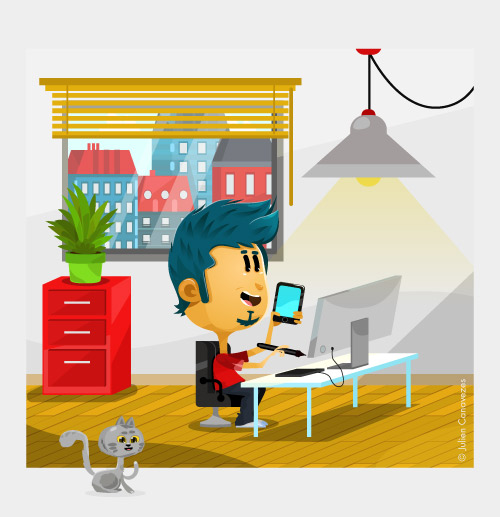



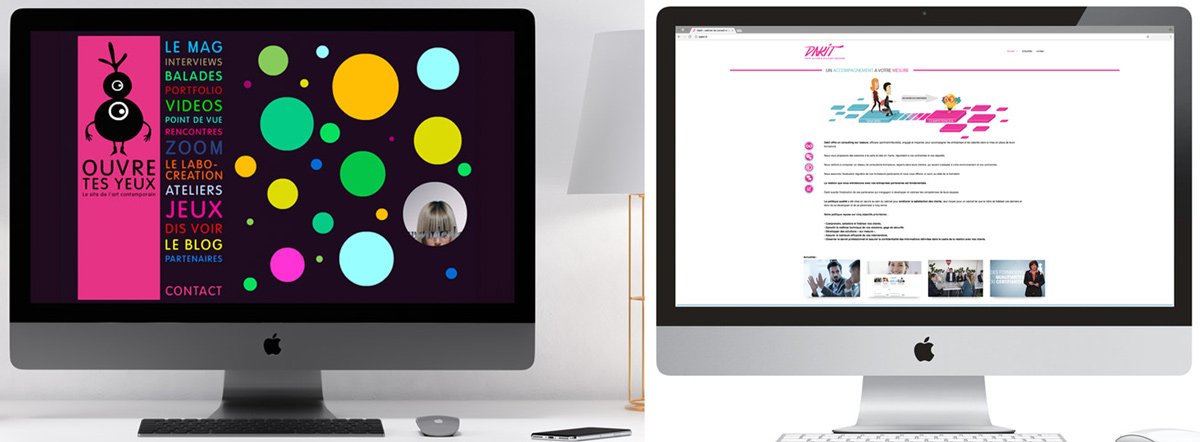

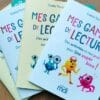
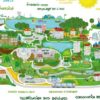


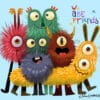
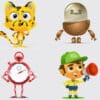
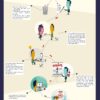
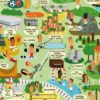
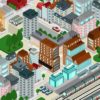
Bonjour ! 🙂
Merci pour cet article, c’est très intéressant et bien utile.
Je voulais savoir : est-ce qu’il y a d’autres métiers/familles dans le domaine de l’illustration ? Illustratrice me plait bien mais Je ne sais pas vers quoi me tourner, donc je voudrais rédiger une liste de toutes les branches existantes pour ensuite les comparer ; ça m’aiderait à me décider. 🙂
Bonjour Camille,
Il y a en effet plusieurs branches dans la communication visuelle voici une liste :
• Directeur artistique
• Infographiste
• Graphiste
• Illustrateur / illustratrice 2D et/ou 3D
• Roughman
…
Chaque métier a sa spécificité, il n’est pas rare d’allier le graphisme et l’illustration par exemple ou de savoir tout faire également.
N’hésite pas si tu as d’autres questions 😉
Julien
Merci beaucoup pour ta réponse 🙂
Je voulais faire infographiste au départ et puis j’ai bifurqué vers l’illustration. Mais ce que je voulais savoir en fait, c’est s’il y avait d’autres familles de dessinateur/illustrateur, car je suppose que c’est une liste non exhaustive que tu as présentée. ^^
Bonjour Camille,
Il y a une famille d’illustrateur, a toi par la suite de t’orienter vers ce qui te plais (photographie, graphisme, inforgraphie…)
Avec les années et l’expérience, tu vas vite savoir ce qui t’intéresse, mais aussi sur quelle casquette les clients te contacteront 😉
++
Julien
Merci pour ton aide. 🙂
Bonne année ^^
bonjour moi j’aime biens faire du découpage d ‘image de faire des montage photo
des sticker, affiche …
mais surtout travailler a partir de photo d’artiste , Disney montage photo famille etc…
crée des image qui existe pas encore etc j’aime également jouet avec les couleur
les caractère de police écrire des histoire quand j’ai des idée je voudrais biens vous faire certaine de mes création
car je ne c’est absolument pas quelle domaine choisir j’ai effectuer un stage chez un créateur poseur de Stickers
pour grande enseigne mais se qui ma le moins plus c’est que c’était les client qui imposez se qui désire
donc pas libre de faire parler notre imagination j’espère que vous me comprendrait
sinceres salutation
Bonjour Jonathan,
Je peux comprendre ta frustration, cependant le métier d’illustrateur et graphiste est un vrai travail avec des exigences.
Les clients passent commandes, il faut savoir répondre à leur demande.
Peut-être as-tu un profil d’artiste ?
Je te souhaite une bonne continuation 😉